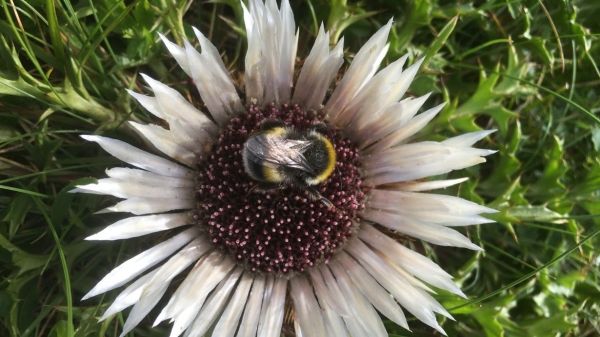The global food system depends strongly on pollination by insects. According to the European Commission, this ecosystem service can be estimated to be worth several billion euros for Europe alone. Wild pollinators, such as bumblebees, play an important role. But their dispersion areas will change as a result of climate change. “Earlier studies revealed that populations of more than half of the European bumblebee species are decreasing,” says Dr. Reinhard Prestele from the Atmospheric Environmental Research Department of the Institute of Meteorology and Climate Research (IMK-IFU), KIT’S Campus Alpine in Garmisch-Partenkirchen. “But bumblebee populations are not only threatened by climate, also by land use changes.” Although the risks of intensive agriculture are known, they were not differentiated sufficiently from climate change in continental studies. This has now been done by researchers of KIT and partners from the Joint Research Centre (JRC) of the European Commission in Ispra (Italy). They simulated the effects of land use changes on the future dispersion of European bumblebees.
Read more at: Karlsruher Institut für Technologie (KIT)
A white-tailed bumblebee (bombus lucorum) visits a thistle at Kreuzeck, Garmisch-Partenkirchen. Populations of many European bumblebee species are presently decreasing. (Photo Credit: Penelope Whitehorn, KIT)


